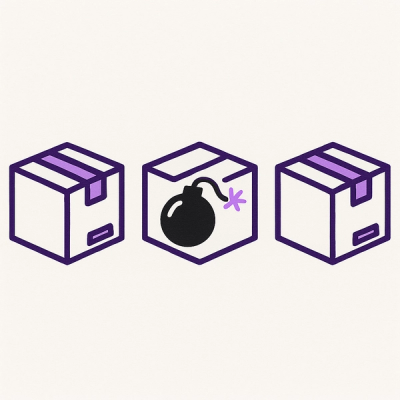========
Shrink
Shrink is a command for concatenating and compressing css stylesheets and
javascript files making them smaller.
Shrinking (or minifying) these files reduces the number of request that are
made after a page load and also the size of these requests.
This command depends on YUI Compressor_ for compression, and runs with
Python 2.5 and above, including Python 3.
Install
Shrink can be easily installed from pypi by running::
$ pip install shrink
After install is good to display script information and options::
$ shrink -h
.. _YUI Compressor: http://developer.yahoo.com/yui/compressor/
Config file
INI style files are used to know which files will be minified, set some
global options and also to know which files will be joined before
minification.
A good starting point to get familiar with Shrink config file format is to
read the example shrink config file. To create an example file run::
$ shrink --example-cfg
This command creates a file called example_shrink.cfg in current folder.
Config file format
Config file has a section for each individual file that can be generated,
and on top it also has a special section called DEFAULT where global
options are defined.
Global DEFAULT options:
base_dir defines a base directory used as prefix to find static files.
This value can be referenced in any other section using the python variable
notation %(base_dir)s.hash_dir defines a folder where shrink.sha1 file is stored. See
Shrink hash file_ for more info. By default, this file is stored in the
same folder where shrink config file is located.arg.* defines default values for some command line argumens. Supported
arguments are arg.java_bin and arg.yui_jar.
The values given here are overriden by the ones given during runtime as
command line arguments.
Each file section has some options that are used during join, compression and
hashing of a file. These file section options are:
source_directory value defines the folder where file(s) listed in
source_files are located.source_files value can be a single file name, or a list of file names.
When a list of names is given, each file in list is concatenated (from top
to down) into a single file before compression.destination_directory value sets output directory for the minified file
By default minified file is generated in source directory.destination_file value is the name for the minified file.hash is a boolean value. When it is true destination file is included
during shrink hash generation. See Shrink hash file_.compress is a boolean value. Destination file is not compressed when
this value is false. By default compression is done for destination
files.
This option is useful when is desirable to join many files without
compressing them because they are already compressed.
For example, a section for minifying a file called sample-file.js could
be written as::
[sample-single-file-js]
source_directory = %(base_dir)s/js
destination_file = sample-file.min.js
source_files = sample-file.js
Final minified file name would be sample-file.min.js.
Many files can also be specified to be joined into a single file before
compression by writing a section like::
[sample-multiple-file-css]
source_directory = %(base_dir)s/css
destination_file = sample-multiple-file.min.css
source_files =
sample-file1.css
sample-file2.css
sample-file3.css
Generated file name is given by destination_file value.
Minimize css and js files
To minify all files, run::
$ shrink -f example_shrink.cfg all
This will use yuicompressor.jar and the example_shrink.cfg file in
current directory to compress all files.
In case that minification is not desired for all files, is also possible to
minify individual files, or a group of files (See Section groups_), by
using the name(s) of each section instead of all as argument.
To list available sections, run::
$ shrink -f example_shrink.cfg -l
Section groups
Instead of running script with sample-single-file-js and
sample-multiple-file-css as arguments is possible to define a group like::
[sample-group]
group =
sample-single-file-js
sample-multiple-file-css
And then run minifier script with sample-group as the only parameter.
Shrink hash file
After minification Shrink can create a file containing a SHA1 hash. The file
is created when at least one section in config file has hash = true. Hash
is created using the contents of all destination files in these sections.
This is useful to know when some files changed, and to reload static css and
javascript files without using a timestamp or version number.
Sometime can be desirable to reload modified static files without increasing
application version. In these cases the hash can be used as request parameter
instead of version number.
Deployment notes
It can happen your application stop working or have unespected results when
it is deployed with minified css and javascript files.
Many times some of these problems are is easy avoid by having present the
following notes during shrink.cfg setup:
- The order of the source files in each config section must be the same as
the one in your HTML templates.
- CSS files normally contains URLs which are relative to the location of
the file where they are declared. So for these cases the location for
destination file must be the same as the one for source files.
Some javascript files might define some path or URL that might also be
relative to a file location.
- Check that all files wich are NOT minified are being included in your
HTML template.
=========
Changelog
1.1.1 - 2012-09-21
- Setup argument use_2to3 is now enabled only for python 3 series
- Added
Deployment notes to README file
- Added read permissions to generated files for group and others
1.1.0 - 2012-07-31
- Added python 3 support
- Updated documentation
- Added initial files for unit testing
1.0.1 - 2012-07-19
- Added --hash-dir argument to allow changing hash file dir during runtime
- Added
compress INI file option to avoid compressing destination file
- Added --example-cfg argument to create an example_shrink.cfg file in
current folder
1.0.0 - 2012-07-11
- Added --version argument
- Added SHA1 hashing support (
hash = true in any file section)
- Added --hash-all argument to generae SHA1 hash using all files contents



